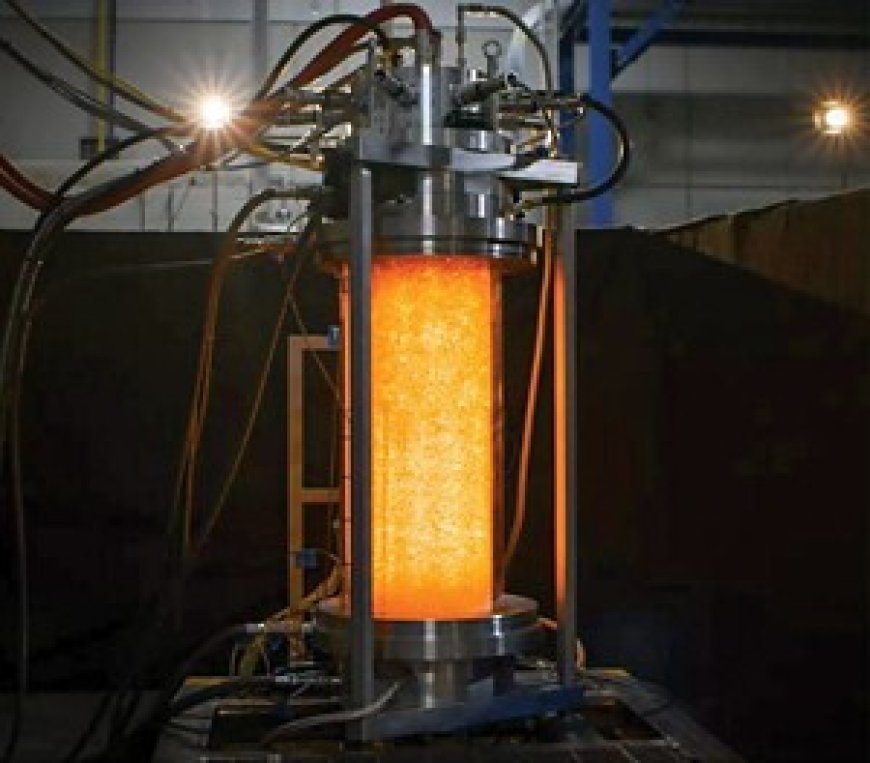Light-powered Hydrogen Generator
Explore the cutting-edge concept of light-powered hydrogen generators, revolutionizing the production of clean hydrogen fuel through solar energy. Learn about the process of splitting water molecules to generate hydrogen, contributing to sustainable energy solutions and reducing carbon emissions.

Hydrogen generators are used to produce hydrogen from water. Recently, with the increased traction into sustainability, there has been a significant increase in the interest in hydrogen generators. One interesting approach is light-powered hydrogen generation, which has recently been in research. It uses sunlight to drive chemical reactions and produce hydrogen gas.
In this article, we will learn more about hydrogen generators, specifically light-powered hydrogen generators, their prospective uses, and the most recent advances in this sector.
The Syzygy Light-Powered Reactor
Syzygy Plasmonics, a Houston-based start-up, has achieved a significant milestone by building the world’s first light-powered reactor for industrial chemical reactions. This reactor is specifically designed to produce hydrogen from ammonia. Let’s explore the key features of Syzygy’s breakthrough:
-
Ammonia Cracking Process: Syzygy’s reactor employs a light-based ammonia cracking process. Unlike traditional thermal cracking methods, which consume substantial energy, this innovative approach minimizes energy requirements. The technology is based on research developed by scientists at Rice University.
-
Energy Efficiency: The reactor efficiently breaks down ammonia molecules into hydrogen and nitrogen by utilizing light energy. The result is a more sustainable and energy-efficient process for hydrogen production.
-
Industrial Applications: Syzygy’s reactor holds immense potential for industrial applications. As ammonia gains traction as a hydrogen carrier, this light-powered system could revolutionize how we generate clean fuel.
Syzygy was founded in the year 2017. The company is the developer of a photocatalytic reactor designed to electrify chemical manufacturing and decarbonize many hard-to-abate industries. The company's reactor is powered by light instead of heat and operates at a lower temperature than conventional chemical reactor technology, using light as an energy source enables the use of renewable electricity and eliminates the use of combusted fossil fuels, enabling companies to reduce maintenance costs while simultaneously reducing carbon emissions. The company owns multiple patents for their technology.
In year 2022, the company raised series C funding of $76.7 million.
Syzygy is focused on
Ammonia as a Hydrogen Transport Medium
Ammonia (NH₃) has garnered attention as a viable hydrogen carrier due to its high hydrogen content and ease of handling. Researchers in Japan and elsewhere are actively studying ammonia’s role in the hydrogen economy. Here’s why ammonia is a promising candidate:
-
Hydrogen Content: Ammonia contains approximately 17.6% hydrogen by weight, making it an efficient carrier for hydrogen storage and transport.
-
Existing Infrastructure: Ammonia infrastructure already exists globally, thanks to its use in fertilizers and industrial processes. Converting existing ammonia facilities for hydrogen production could accelerate adoption.
-
Decoupling from Fossil Fuels: By dissociating ammonia into hydrogen and nitrogen using light-powered reactors, we can decouple hydrogen production from fossil fuels, reducing greenhouse gas emissions.
Read More Sustainability News Here.
Beyond Ammonia: Other Light-Powered Approaches
While Syzygy’s reactor focuses on ammonia, other research groups are exploring alternative light-powered methods:
-
Photocatalysis: Researchers at Cambridge University have developed a solar-powered device that simultaneously produces clean water and hydrogen. The photocatalyst, deposited on a nanostructured carbon mesh, efficiently utilizes both light and heat to generate hydrogen1.
-
SunCell® Technology: Brilliant Light Power has invented the SunCell®, which catalytically converts hydrogen directly into a unique form called Hydrino®. The resulting high-energy light can then be converted into electricity using commercially available photovoltaic cells2.
What is Hydrogen Generator?
A hydrogen generator is a machine that produces hydrogen gas from water using a process called electrolysis. Working process of a hydrogen generator is provided below:
-
Electrolysis Process:
- The heart of a hydrogen generator is the electrolyzer cell where the magic happens.
- This cell contains two electrodes: an anode and a cathode, separated by an ion exchange membrane.
- When a continuous voltage is applied to the electrodes, the following reactions occur:
- At the anode (positively charged electrode), water molecules lose two electrons, forming an oxygen molecule and four hydrogen ions:
- Anode: 2H₂O → 4H⁺ + O₂
- The oxygen produced in this half of the reaction is safely vented to the atmosphere.
- The four hydrogen ions then pass through the ion exchange membrane (attracted by the negatively charged cathode) and collect four electrons, reducing them to two hydrogen molecules:
- Cathode: 4H⁺ + 4e⁻ → 2H₂
- At the anode (positively charged electrode), water molecules lose two electrons, forming an oxygen molecule and four hydrogen ions:
- The resulting hydrogen gas is separated from the oxygen by the ion exchange membrane, ensuring high purity.
-
Purity and Applications:
- Hydrogen generators provide a safe, convenient, and cost-effective alternative to using high-pressure hydrogen cylinders.
- They produce consistent purity hydrogen, eliminating variations in gas quality that can impact analytical results.
- Applications include:
- Laboratories: Used in gas chromatography (GC) as fuel or carrier gas, and in inductively coupled plasma mass spectrometry (ICP-MS) as a collision gas.
- Chemical Industry: Synthesizing ammonia, cyclohexane, and methanol.
- Food Industry: Hydrogenation of oils to form fats.
- Transport Vehicles: Some vehicles now use hydrogen gas as a clean, pollution-free fuel, with water as the by-product of combustion.
Light-powered hydrogen generators represent a promising avenue for sustainable energy production. As research continues, we may witness widespread adoption of these innovative technologies, driving us closer to a cleaner, hydrogen-powered future.
Remember, the sun’s energy holds immense potential—breaking down ammonia or creating new forms of matter. Let’s harness it wisely for a greener planet! ????????
References:
- Syzygy readies light-powered hydrogen generator
- Hydrogen fuel cells help keep rail crossings safe
- Solar-powered device produces clean water and clean fuel at the same time
- Brilliant Light Power | Creating a game-changing, nonpolluting, new energy source
What's Your Reaction?























